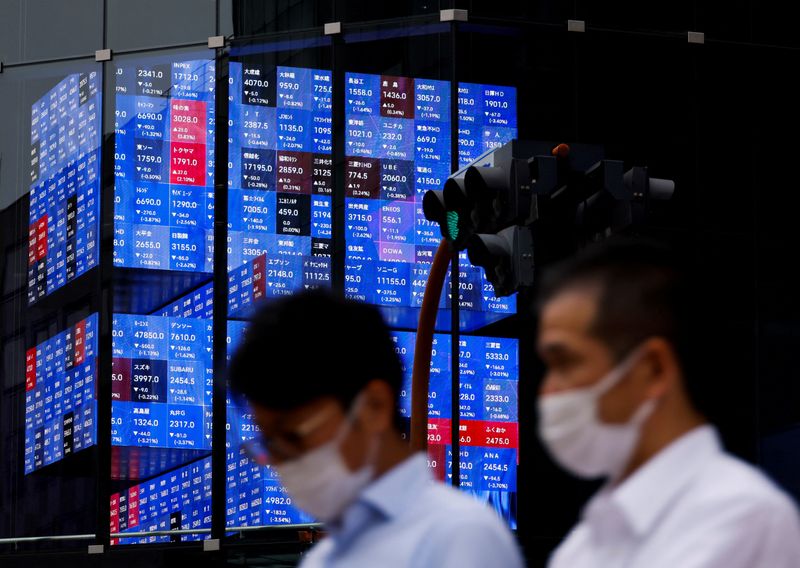(Reuters) - A look at the day ahead in Asian markets from Jamie McGeever
The final quarter of the year kicks off on Monday and the market mood could not be darker. This may in fact be one of the few sources of optimism that the bottom is in, at least for now.
Investors are betting that soaring U.S. interest rates, bond yields and the dollar will tighten financial conditions enough to tip the U.S. and global economies into recession. A few domestic crises and central bank interventions - think Britain and Japan - have only darkened the global gloom.
By some measures - the S&P 500 and the ICE (NYSE:ICE) BofA Treasury Index's respective year-to-date falls of 25% and 13% - this is shaping up to be the worst year since the 1930s. A typical 60-40 portfolio is down around 20% so far this year.
Ryan Detrick at Carson Group notes that since the World War Two, the S&P 500 twice posted a bigger Jan-Sept fall, in 1974 and 2002. But in both years, it rose 7.9% in the fourth quarter.
On Friday, JP Morgan's Marko Kolanovic - one of the most vocal equity bulls - appeared to throw in the towel, saying he now fears a central bank policy error. Peak bearishness?
Another glimmer of temporary hope is on the economic front. While everyone is slashing their 2023 outlooks, the current data flow is actually not as bad as feared - Citi's G10 economic surprises index is positive and its highest since May.
But the bigger picture is challenging, and there is no shortage of tests for investors this week, including: U.S. earnings season gets underway, global PMIs, U.S. non-farm payrolls, a raft of policymaker speeches ahead of the IMF/World Bank meetings, a rate decision in Australia, and Brazil's presidential election.
Key developments that could provide more direction to markets on Monday:
Brazil election aftermath

U.S., euro zone, UK, Canada and other PMIs (September)
Fed's Bostic, Barkin, George speak